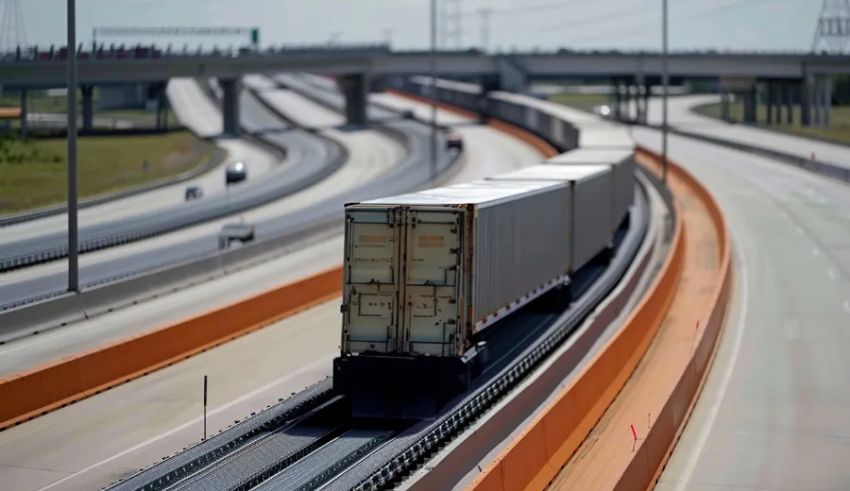
Officially known as an “auto flow road,” the government of Japan has presented plans for a revolutionary “conveyor belt road,” meant to transform goods movement between Tokyo and Osaka, as the country struggles with a growing scarcity of truck drivers and rising demands in logistics. Under this ambitious initiative, unmanned cargo units will use designated lanes inside the road network, completely automating a 24-hour corridor and so reducing the load on drivers and offering a safer and more sustainable transportation alternative.
Managing the Labor Shortage Crisis and the “2024 Problem”
With almost 90% of Japan’s transportation capacity carried by road, the country’s logistics sector has historically mostly depended on trucks. But new labor laws have limited drivers’ overtime hours, a rule known as the “2024 problem” in trade circles. Originally meant to prevent overworking and lower accidents, the regulation has put further pressure on a workforce already shrinking. Government projections alert of a possible 34% reduction in transportation capacity by 2030 in absence of alternatives. With almost 60% of Japanese households now routinely making online purchases, a significant rise from 40% pre-pandemic, this impending shortfall comes as online shopping demand has surged.
Incorporating ideas like automated loading systems that will interact with ports, airports, and trains, the new automated corridor is meant to head-on confront these issues. Wheeled freight containers are depicted in a government-released computer graphic film gliding effortlessly along a dedicated three-lane system set inside current highways, apart from normal traffic. Standing around six feet tall and three-six feet broad, each container can carry a variety of products and is about the size of a big closet.
Test runs for the project are scheduled to start between 2027 and early 2028; complete operations by the mid-2030s are planned. Should it be successful, the idea might be extended to other main paths across Japan and finally include autonomous technology for the last delivery distance from transit hubs to specific locations.
Environmental Advantages and World Inspired Design
Apart from solving labor shortages, the automated corridor fits Japan’s carbon-reducing targets. The method could drastically lower emissions by restricting idle fuel consumption and removing typical trucks from the road. Other nations dealing with comparable logistical issues have also taken an eye on the initiative. Reportedly investigating automated transportation choices are Switzerland and Great Britain; London is building an above-ground system utilizing reasonably priced linear motors while Switzerland plans an underground cargo tunnel.
Japan’s trucking sector is also raising consumer awareness to assist lower demand pressures, considering the direction goods travel from here. Companies such as the roughly 400-company Japan Trucking Association are pushing consumers to group their online orders and rethink the need for regular delivery. Certain industry analysts are even advising companies to restrict or cut free delivery services, a step that would help to ease the great need for regular truck dispatches.
Professor Yuji Yano of Ryutsu Keizai University claims that the transportation crisis affects Japan’s whole economy and quality of life rather than only logistics. Given that trucks carry more than 60% of the fresh fruit imported into the nation, the future of this industry affects not only the availability but also the welfare of Japanese people.
Japan’s Roads: A Safer Future
The emergence of automated transportation systems might potentially make Japanese roadways safer. From the almost 2,000 deaths reported in 2010, the nation now sees almost 1,000 deaths from delivery truck accidents—a notable drop. Still, the Japan Trucking Association is dedicated to lower death rates and finds the automated corridor to be a necessary first step toward that end.
Japan’s conveyor belt road will revolutionize the country’s transportation scene with its original approach to automated logistics. As a model for nations all around, this innovative corridor promises to solve labor shortages, increase environmental sustainability, and improve road safety. While Japan advances this historic initiative, it not only solves current problems but also lays the groundwork for a more robust, effective, and safer transportation future.























